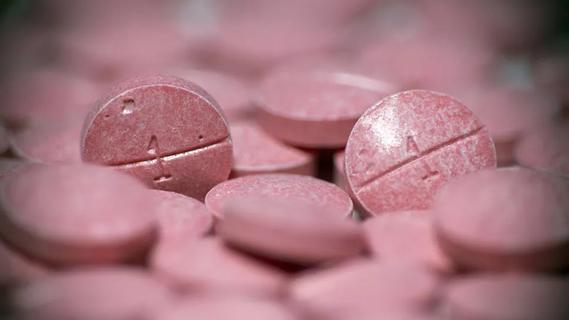Fatigue leads a list of telltale signs of the ‘kissing disease’

Your teen seems sleepier and more tired than usual. (How’s that even possible, right?) They’re also complaining about a sore throat and their neck seems a bit swollen. Plus, their skin seems sort of yellow.
Advertisement
Cleveland Clinic is a non-profit academic medical center. Advertising on our site helps support our mission. We do not endorse non-Cleveland Clinic products or services. Policy
The symptoms line up with mononucleosis, or “mono” for short. You may also know the contagious infection by a much cuter name — “the kissing disease” — given the popular way it’s transmitted.
But how can you know for sure if your child has mono? And what do you do next? Pediatrician Heather Sever, DO, has some answers.
For starters, mono is a viral infection. It spreads from person to person through bodily fluids, most often saliva — hence, the “kissing” connection, though it can also be passed along by less romantic means like:
The virus behind the vast majority of mono cases is Epstein-Barr virus (EBV), a type of herpes virus. Don’t be alarmed by that family tree: EBV is vastly different from the herpes simplex virus that causes genital and oral herpes.
Also, EBV is extremely common. Around 90% of Americans are infected with it by the age of 35. Many just carry the virus, says Dr. Sever. Not everyone who has it develops mono symptoms.
For those who do show symptoms … well, you’re probably looking at a month or two to fully recover, says Dr. Sever. It’s also possible in some cases that fatigue may linger for longer than six months.
Advertisement
Mono typically announces its presence slowly, with symptoms coming on gradually. It can take four to eight weeks for signs of the illness to show after exposure. Some cases may be mild. Others may be severe.
So, what should you look for regarding symptoms? Common signs include:
People with mono may also develop a mild liver inflammation, or hepatitis. Liver issues may lead to jaundice, a yellowing of your skin and whites of your eyes, notes Sever.
A rash may also occasionally be seen, often coinciding with antibiotic use. Nausea and vomiting may be part of the package, too.
A case of mono also could lead to pain in the upper left side of your abdomen behind your ribs. That’s your spleen expressing its displeasure. Don’t ignore it.
The pain may be a sign of splenomegaly, or an enlargement of your spleen, and could lead to a splenic rupture. “This is a life-threatening condition because it can lead to significant blood loss,” explains Dr. Sever.
About 50% to 60% of mono cases include an enlarged spleen, says Dr. Sever.
This complication is especially notable for athletes, who’re at increased risk of a rupture with physical activity. As a precaution following the start of symptoms, that means no participation in non-contact sports for three weeks.
Make it four weeks of downtime for contact sports, including football, basketball, baseball/softball, hockey, volleyball, gymnastics, lacrosse and wrestling.
Take four weeks off from weightlifting, too, given the pressure it puts on your abdomen.
A heterophile blood test (monospot) will indicate if all of the feeling-icky symptoms point to mono. An additional test called a complete blood count (CBC) will show if there’s an increased white blood cell count and atypical lymphocytes, an unusual-looking white blood cell.
A word of warning, though: “There is a high false-negative rate for the monospot test in the first week of the illness — up to 25%,” notes Dr. Sever. “People who exhibit all of the symptoms but have a negative test may have to have it repeated later or have a specific EBV test done.”
It should also be noted that testing doesn’t open the door to a magical cure-all or antibiotic. “There is no specific treatment for mononucleosis other than an abundance of rest,” says Dr. Sever.
So why get an official diagnosis? It helps explain the worrisome symptoms (especially fatigue) and rule out other illnesses such as a streptococcal infection. Confirmation of mono also helps minimize risks when it comes to doing activities.
Advertisement
The peak period for mono covers the late teen years and early adulthood — basically, the span between age 15 and 24, says Dr. Sever.
Younger kids are also prone to picking up EBV but often don’t show symptoms of mono. “There is a high false-negative rate in infants and children under the age of 4,” adds Dr. Sever. “They may have very mild symptoms and are often undiagnosed.”
Rest is best when it comes to dealing with mono. Pain relievers such as acetaminophen or ibuprofen can be used as needed, says Dr. Sever. Make sure to get in enough fluids and food, too.
There aren’t any restrictions or specific quarantine guidelines concerning returning to work or school. “It is largely dependent on the severity of symptoms and degree of fatigue experienced,” says Dr. Sever.
Preventive measures are helpful in limiting the spread of mono, though. Wash your hands frequently and don’t share food, drinks, utensils or toothbrushes with an infected individual. It’s a good idea to hold off on kisses, too.
Advertisement
Learn more about our editorial process.
Advertisement

Bleeding is a risk and warrants taking care, but the reward of this lifesaving medication is great

Severe and debilitating headaches can affect the quality of your child’s life

With repeat injections over time, you may be able to slow the development of new wrinkles

Although it can be alarming, it’s normal to experience blood clots during menstruation

Stretch before heading outside, keep proper form and avoid jerking or twisting to throw snow

Type 2 diabetes isn’t inevitable with these dietary changes

Applying a hot or cold compress can help with pain